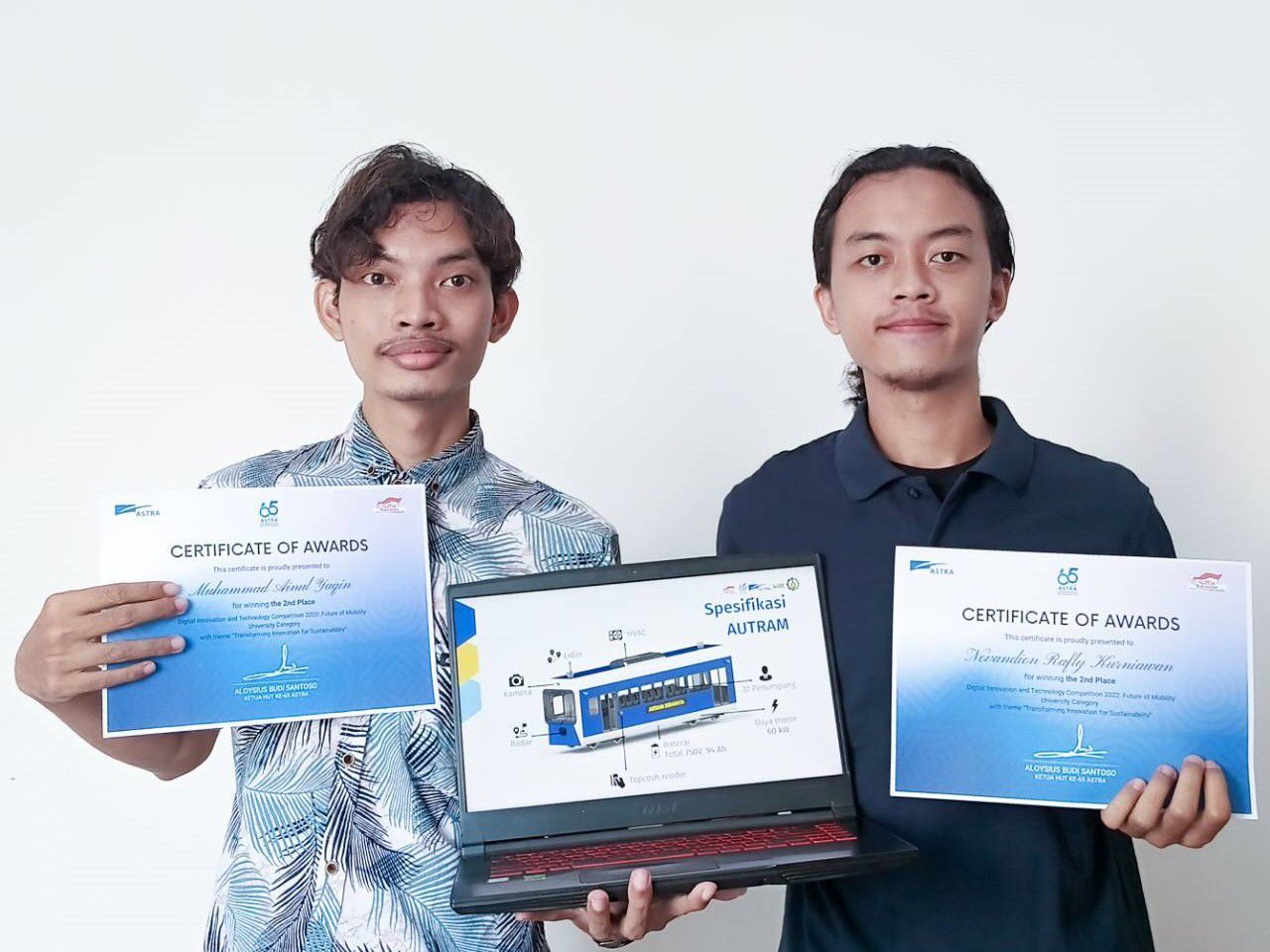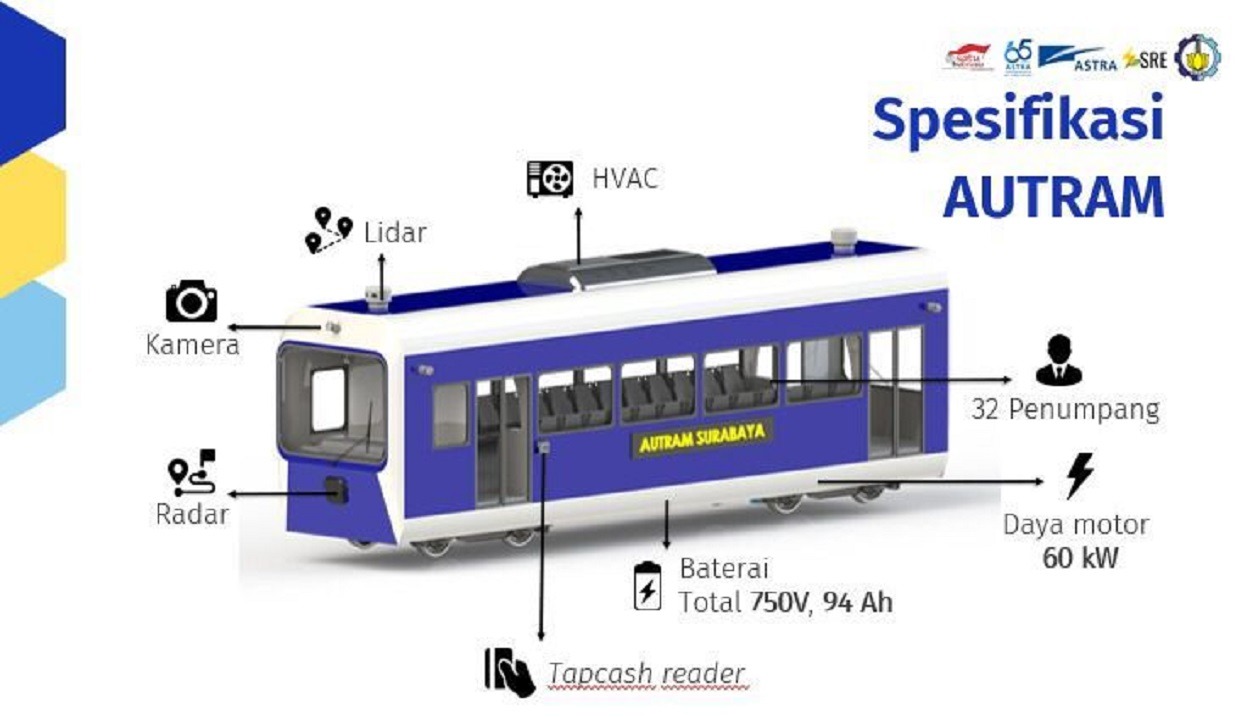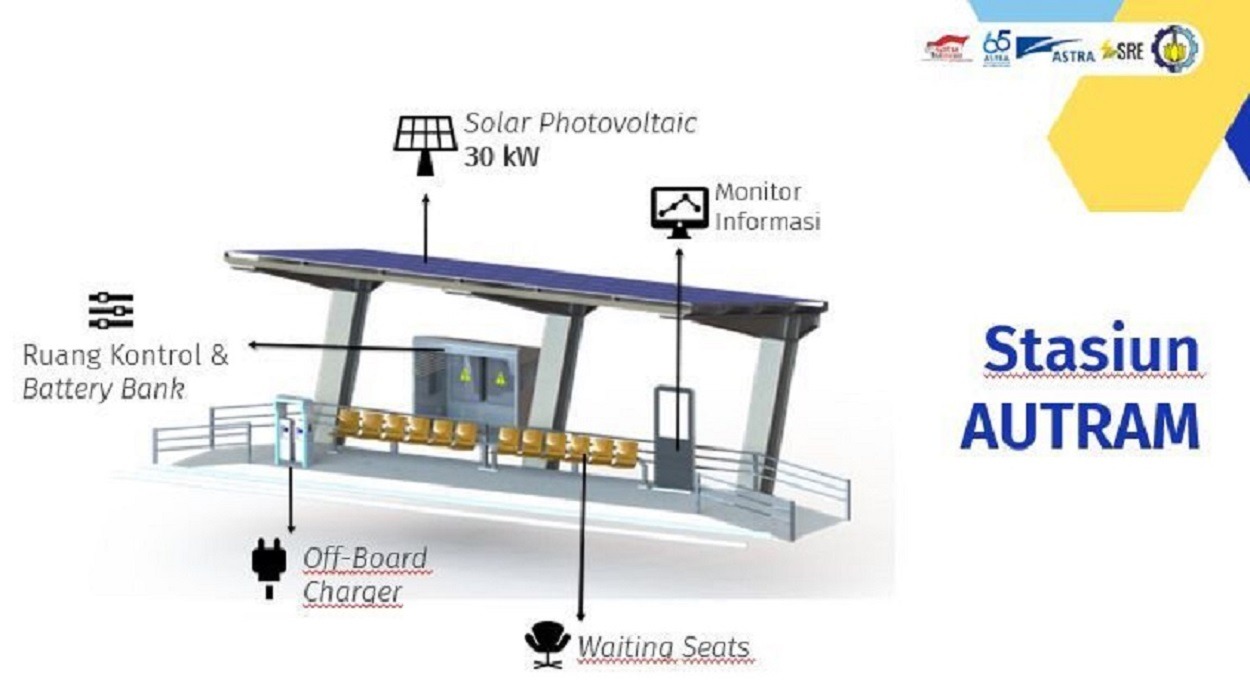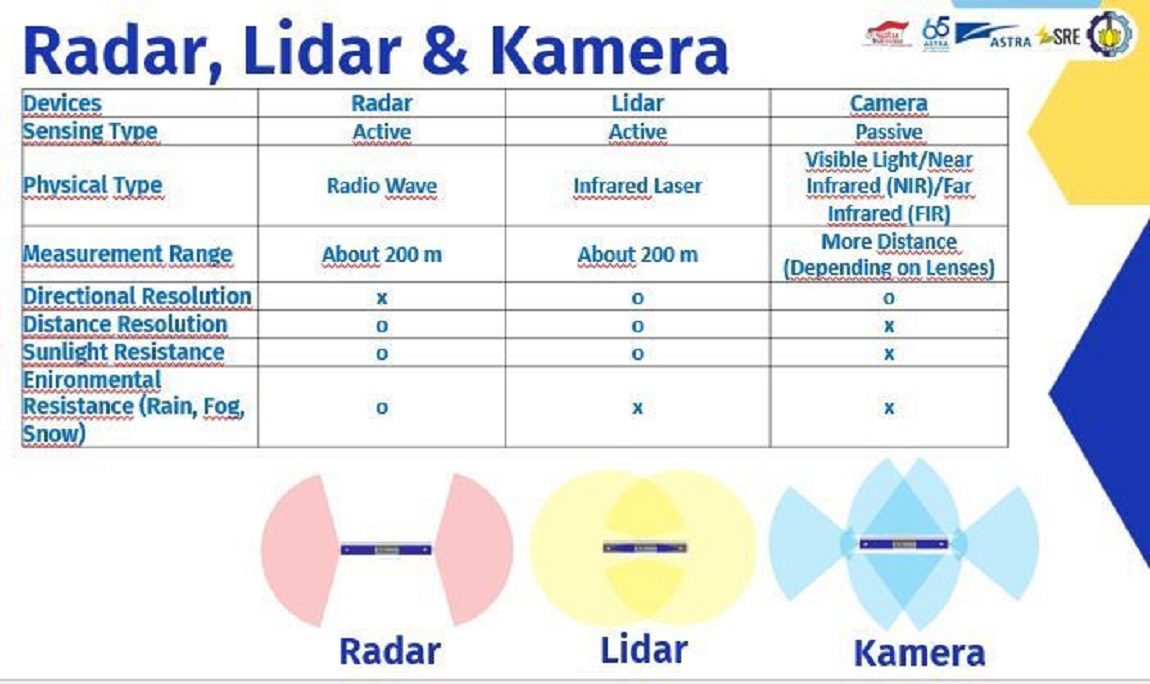Reducing Carbon Emissions, ITS Students Initiate Driverless Tram

(from left) Muhammad Ainul Yaqin and Novandian Rafly Kurniawan are members of the ITS Solar Team, the initiators of the Autonomous Electric Tram (AUTRAM), also known as the driverless tram
ITS Campus, ITS News – Departing from concerns about the poor air quality in Surabaya, students of the Institut Teknologi Sepuluh Nopember (ITS) initiated the Autonomous Electric Tram (AUTRAM) innovation, aka battery-powered driverless tram as a future mode of transportation. The tram is claimed to be able to reduce carbon dioxide emissions in Surabaya by 31 tons per year.
Muhammad Ainul Yaqin, Head of the Research Team, said that the idea of AUTRAM as a vehicle that uses battery power is relatively new. Especially with the additional advantages of batteries that can be charged using solar power plants. “This idea is relatively new, and the use of renewable energy is also suitable to be applied in Surabaya,” he said.
The student called Inung continued that several sensors are needed to run this tram. From the Global Navigation Satellite System (GNSS), Light Detection and Ranging (LIDAR), and Radar, to cameras with their respective functions that complement each other. Like the GNSS sensor, this sensor functions to determine the position of the tram using a satellite navigation system.

AUTRAM specifications consist of sensors, batteries as a source of power for the tram, as well as the transportable capacity of passengers
Furthermore, the LIDAR sensor is used to detect and map the three-dimensional shape of the surrounding environment with high accuracy. While the Radar sensor will detect and measure the distance accurately. “Radar sensors can be relied on for emergency braking systems,” said this 2019 Physics Engineering Department student.
In addition to the three sensors, there is also a camera able to detect objects around the tram, traffic signs, and road lines. This is also supported by an artificial intelligence called Movement Authority Limit (MAL). MAL can determine the distance limit allowed for the tram to move. “That way, the tram can move forward, stop, reverse, increase speed, and reduce speed,” said Inung.

Illustration of a station for AUTRAM passengers which is also used as a place to charge batteries
Furthermore, Inung also explained how the drive system run in AUTRAM. Unlike traditional trams that use electricity, AUTRAM runs on solar batteries. “If the power in the battery runs out, it will be replaced with a new battery that has been charged at the charging station,” said the young man from Jember.
Using one full battery power, AUTRAM can cover a distance of up to 77 kilometers. In addition, this vehicle with 11.5 meters in length, 2.7 meters in width, and 3 meters tall also have the advantage of a non-cash payment system, so that the entire system on this vehicle can be run without human labor.

Comparison of Radar, LIDAR, and camera sensors used to run AUTRAM
Not only utilizing renewable energy, Inung’s innovation with his colleague Novandian Rafly Kurniawan, a member of the Solar Team, also has an impact on reducing carbon emissions. These include motor vehicles, road congestion due to a large number of private vehicles, and the production of a modern city public transportation system.
Thanks to this idea, the Solar Team, which was guided by Dr. Bambang Lelono Widjiantoro ST MT, has won 2nd Place in the Future of Mobility Category in the 2022 Digital Innovation and Technology Competition (DIGITECH) which was held by Astra Indonesia, some time ago.
In the end, Inung, representing the Solar Team, hopes that future research can be carried out on Autonomous Tram in Indonesia immediately. As before, there has been a discourse on the development of Surotram and Boyorail transportation in Surabaya. “We hope that Indonesia can be at the forefront of developing AUTRAM research so that it does not depend on other countries technology,” he concluded optimistically. (ITS PR)
Reporter: Fathia Rahmanisa
Translator : Hanifah Inayah
Related News
-
ITS Collaboration with BPBD East Java, Launching VR Disaster Simulation
ITS Campus, ITS News — Supporting anticipation of disasters and continuing to educate the public, Institut Teknologi Sepuluh Nopember
July 13, 2022 12:07 -
Supporting the Implementation of Innovative Ideas, ITS and IYSA Hold International Competition
ITS Campus, ITS News — Institut Teknologi Sepuluh Nopember (ITS) has once again proven its commitment to supporting the
July 13, 2022 12:07 -
ITS Maintains Informative Qualification for Five Consecutive Years at KIP Awards
ITS Campus, ITS News — Institut Teknologi Sepuluh Nopember (ITS) has once again successfully maintained its Informative Qualification predicate
July 13, 2022 12:07 -
ITS Strengthens Smart Eco-Campus through UI GreenMetric 2024
ITS Campus, ITS News — Institut Teknologi Sepuluh Nopember (ITS) has once again demonstrated its commitment to environmental concern
July 13, 2022 12:07
